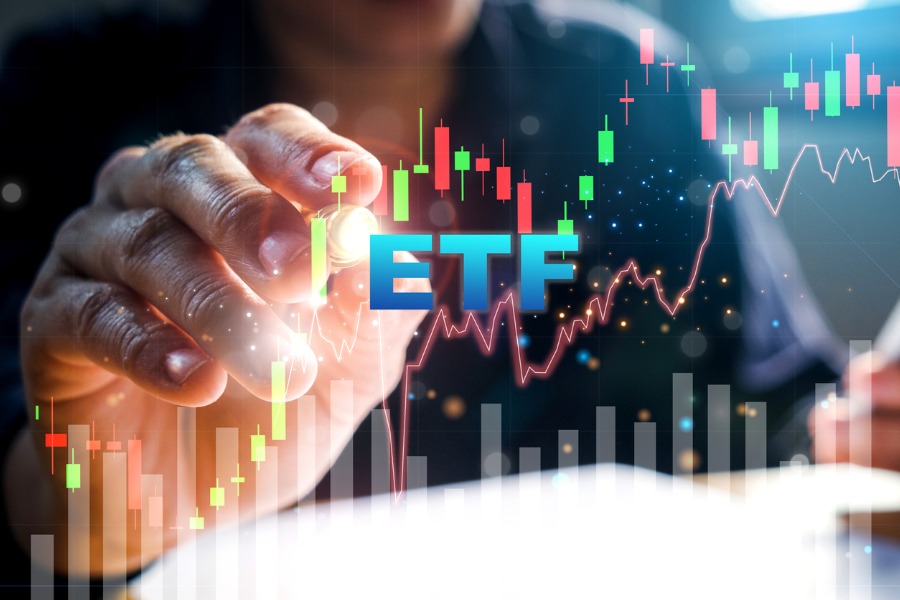

Investor appetite for ETFs shrank dramatically in April, with global ETF flows falling to $68.5 billion from $126.5 billion in March, according to BlackRock data.
That came as diminished prospects of near-term US interest rate cuts spurred a broad risk aversion led to a significant drop in equity ETF flows and a shift toward government bonds, reported the Financial Times.
Across the world, equity ETF inflows saw a substantial decrease from $106.3 billion in March to $40.7 billion in April. Conversely, fixed-income ETFs, generally seen as lower-risk investments, recorded a modest uptick in demand, rising to $27.4 billion despite the near-halving of overall ETF flows.
Among fixed-income assets, government bond ETFs attracted $10.1 billion, the highest figure since October, reflecting investors’ flight to safety. Short-term US Treasury ETFs saw inflows for the first time since October, while intermediate Treasury funds captured most of the remaining demand.
“We have more inflows going into the front end, and also intermediate, than further out the [yield] curve,” Karim Chedid, head of investment strategy for iShares in the Emea region at BlackRock, told the Times.
Chedid characterized the April sentiment as “muted risk rather than risk off,” noting that markets stumbled amid further scaling back of expectations for Federal Reserve easing.
Scott Chronert, global head of ETF research at Citi, observed that fixed-income ETFs outpaced equity ETFs in the US, pulling in $15.2 billion versus $14.1 billion.
“US-listed ETF flows decelerated this month against a generally risk-off backdrop. Underlying trends also pointed to more cautious positioning,” Chronert told the Times. “Fixed income led all asset classes, but the gains were skewed towards core products, shorter durations, and Treasuries.”
Meanwhile, US-domiciled corporate bond ETFs saw net outflows of $3.3 billion in April, the first monthly decline this year. Matthew Bartolini, head of SPDR Americas research at State Street Global Advisors, highlighted the trend.
Despite the risk-averse mood, US-listed developed market ex-US equity ETFs extended their streak of inflows to a record 46th consecutive month. Bartolini attributed this to the use of ETFs in asset allocation models and favorable overseas valuations.
The trends in BlackRock’s ETF data broadly mirror those reported by National Bank, one of Canada’s largest financial institutions, in a note earlier this month. It said US-listed ETFs “took a breather” in April, with equity inflows easing to around 20 percent of March’s influx against a backdrop of consecutive weekly losses in the S&P 500.
On the fixed-income front, it said US-listed fixed-income ETFs sopped up $15.2 billion in inflows during April, in line with the previous few months.
“With fewer Fed rate cuts being priced in for 2024, investors once again poured money into cash-like or cash-alternative ETFs, taking advantage of short-term rates that might remain higher for longer,” National Bank said.

Rajesh Markan earlier this year pleaded guilty to one count of criminal fraud related to his sale of fake investments to 10 clients totaling $2.9 million.

From building trust to steering through emotions and responding to client challenges, new advisors need human skills to shape the future of the advice industry.

"The outcome is correct, but it's disappointing that FINRA had ample opportunity to investigate the merits of clients' allegations in these claims, including the testimony in the three investor arbitrations with hearings," Jeff Erez, a plaintiff's attorney representing a large portion of the Stifel clients, said.

Chair also praised the passage of stablecoin legislation this week.

Maridea Wealth Management's deal in Chicago, Illinois is its first after securing a strategic investment in April.
Orion's Tom Wilson on delivering coordinated, high-touch service in a world where returns alone no longer set you apart.
Barely a decade old, registered index-linked annuities have quickly surged in popularity, thanks to their unique blend of protection and growth potential—an appealing option for investors looking to chart a steadier course through today's choppy market waters, says Myles Lambert, Brighthouse Financial.
